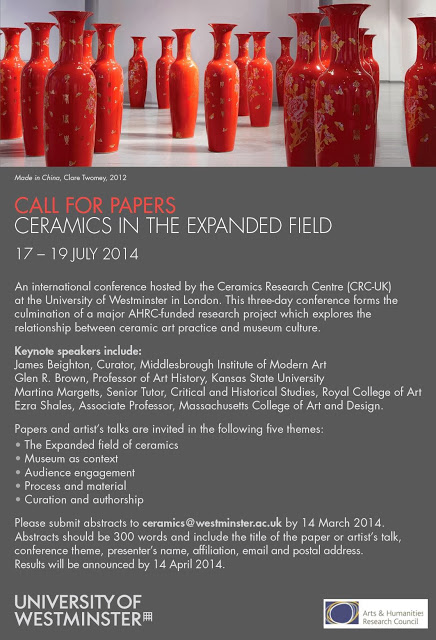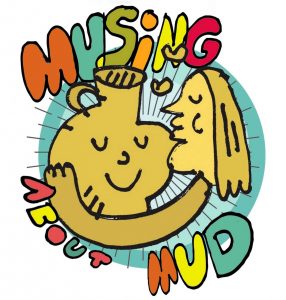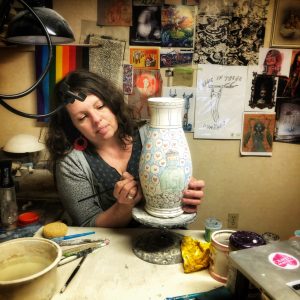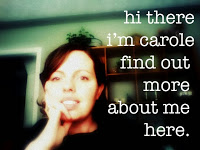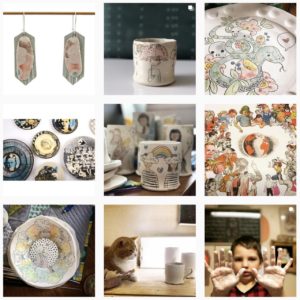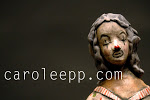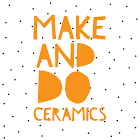by Carole Epp | Apr 1, 2014 | call for entry, emerging artist, job posting, monday morning eye candy, movie day, residency opportunity, show us your influences, technical tuesday
Deadline:
COB Friday 22 August 2014
About
Stepping Up, the 2015 Australian Ceramics Triennale, is the premier event that
brings our ceramics community together. To be held in the national capital,
Canberra, an exciting and diverse program will showcase ceramics through a
series of important discourses and conversations, masterclasses and
exhibitions.
Dates
Public programs commence Monday 6 July 2015
Conference
Program Thursday 9 – Saturday 11 July 2015
General
Guidelines for Speakers
•
Speakers will deliver a presentation for ten minutes, followed by a moderated Q
and A session with conference delegates.
•
A final abstract must be prepared by each speaker and submitted to the session
chair by 1 November 2014 for inclusion on the website (300 words)
•
A completed final paper must be submitted for the printed program by 1 March
2015 Themes 1.
Stepping
Up- the Changing World Around 500BCE Heraclitus said “The only thing that is
constant is change”. Despite intermittent periods of relative stability, change
continues to be a central characteristic of life, particularly in the late 20th
and early 21st centuries. As a group of people who work with or are associated
with one of the world’s oldest art materials, how do we adapt to or, indeed,
drive change? Ceramics courses in universities (and those TAFEs that are still
running them) are being cut to save money, whilst community pottery groups are
booming, and international residency opportunities and mentorships are
increasing. So what will ceramics training and education look like in the
future? From the rapid prototyping of old (throwing on the potters’ wheel), 3-D
printing is being explored in ceramics – it is fast becoming commonplace in
other materials. What are the implications of this for studio pottery and
ceramic design? Will the seductive power of ‘new’ technology spell the end of
studio practice as we have known it, or will clay – the material of our current
creation – prove resistant to uptake? Laser and waterjet cutting have found
their niches in craft practice (including ceramics), as have many other
industrial processes; so is there a studio of the future that will engage with
all of this? By 2020, over one third of the world’s population will live in
China and India, and when the whole of Asia is counted, projections have more
than 50% of the world’s population living in this region. Australia is well
placed to be active in securing a seat on this express train, but what are we
doing about it now? How will this affect our practices, our output, our
livelihood and our understanding of ‘our’ culture?
Conversation
1- New technologies
Conversation
2- Asian Century
Conversation
3- Education
2.
Stepping Up- Your Role in the future Although there persists a romantic view of
the potter or ceramic artist working alone or in a small team – either in a
rural or urban setting, how closely does this reflect the truth? We are all
citizens of the world and, as such, have a responsibility to contribute to its
betterment and that of the ecosystems it supports. This engagement can take
many forms, and the opportunities to use the skills and understanding that we
have to useful ends are many and various. Personal concern, within our own
studios, about our impact on the environment and our own health; official aid
programs, development projects and community events, targeted at improving
health outcomes for those populations who are disadvantaged or in need of
assistance are just some of the many ways in which meaningful engagement with
the broader world can take place.
Conversation
1- Social responsibility
Conversation
2- Community
Conversation
3- Environment
3.
Stepping Up- Making Money In discussions at ceramic gatherings, the elephant in
the room is often money and economic survival. It is essential in today’s
connected world that we utilise all marketing resources available. But this can
mean much more than developing a website or printing business cards. The way in
which social media, industry collaborations, networking and fundraising have
become the norm rather than the exception in the commercial world demands that
we explore, as creatively as possible, all avenues for selling our work or our
skills. One all too often witnesses a slight sniffiness associated with the
whispered comment ‘commercial’ when people see selling exhibitions, marketing
strategies or advertising ploys that do not pretend to be otherwise. To what
extent are we selling our souls to the devil when we ‘make to sell’? What are
alternative and creative ways to develop commercial partnerships, and novel
ways to raise capital for ventures both inside and outside the studio?
Conversation
1- Marketing (social media, videos etc.)
Conversation
2- Collaborating (with industry e.g. architects, restaurants, etc)
Conversation
3- Initiating (innovative self-funding – rather than grants!)
General
Guidelines for Demonstrators
•
Demonstrations are for five hour blocks
•
• An individual may only present once during the conference
•
A final demonstration outline must be prepared by each demonstrator for
publication prior to the conference. This should describe the proposed
demonstration and if more than five hours is required. Demonstrators should
also list the equipment and materials they will require.
Please
note: Travel, accommodation and participation funds are currently not
available.
Nominating
a speaker or demonstrator You may nominate someone to be a speaker or
demonstrator. Please e-mail Mel George, Project Manager with your suggestions.
Email:
[email protected]
by Carole Epp | Apr 28, 2012 | call for entry, emerging artist, job posting, monday morning eye candy, movie day, residency opportunity, show us your influences, technical tuesday
The organizing committee of the 10th
European Academy of Design Conference – Crafting the Future – is
pleased to invite proposals for papers to the following tracks:
Tracks
1. Designing Future Mobility
2. Design Development of Future Homes for Future Cities
3. Design and Innovation
4. MAKING TOGETHER – Open, Connected, Collaborative
5. The craft of design in design of service
6. Fashion Design for Sustainability
7. Design history as a tool for better design
8. Power to the People: Practices of Empowerment through Craft
9. Design & Craft (Crafting the Education of Design)
Full academic papers
We expect papers of 3000-5000 words.
If you wish to submit a full paper to the conference, please send in a short abstract.
Important Dates
Registration of abstract: Until May 15, 2012
Submission of full paper: September 15, 2012
*Notification of acceptance or revision: November 1, 2012
Notification of acceptance: December 15, 2012
Conference date: April 17-19, 2013
*Full papers are: Accepted / Accepted with revision / Not Accepted
Submission period for full papers, 10th European Academy of Design Conference – Crafting the Future:
Start: May 15, 2012
End: September 15, 2012
http://www.craftingthefuture.se/
by Carole Epp | Jan 24, 2012 | Uncategorized
|
Ceramics and Sculpture: Different Disciplines and Shared Concerns
A Call for Papers for a One-Day Conference to be held in Cardiff at Amgueddfa Cymru – National Museum Wales, 5 July 2012
|
|
 |
|
|
|
|
|
Background
Relationships between ceramics and sculpture are a focus for research at Cardiff School of Art and Design. This research has demonstrated that the interests of studio ceramicists and sculptors in Britain either overlapped or came into particularly sharp focus at certain periods during the last century or so. The Henry Moore Institute, Leeds, has in the last few years awarded research fellowships to explore such relationships and one outcome was the exhibition A Rough Equivalent, curated by Dr Jeffrey Jones in 2010 http://www.henry-moore.org/hmf/press/press-information/henry-moore-institute1/a-rough-equivalent . Both ceramics and sculpture now have to make a case for their survival as discrete disciplines within higher education and, increasingly within the arts, categories are blurred. Recently an issue of Interpreting Ceramics www.interpretingceramics.com was devoted to interdisciplinary approaches in American ceramics and the 2012 issue of the journal will address relationships between ceramics and sculpture. Against this background the conference seeks to illuminate shared concerns by examining points of formal, conceptual, theoretical and material convergences between the two disciplines, while also addressing key points of difference.
Scope
The conference conveners welcome a variety of papers that engage with the encounter between ceramics and sculpture. The terms ‘ceramics’ and ‘sculpture’ are intended to be interpreted broadly and include vessels, figurative work, collaborative work, installation and performance. Papers representing new research are particularly welcome and authors are invited to submit proposals based on, but not limited to, the following themes:
- Contextual grounding for the relationships between ceramics and sculpture.
- Materials and processes.
- Formal and conceptual language.
- The role of education.
- The role of curatorial practice in making relationships between ceramics and sculpture manifest.
- Institutional cultures.
- Case studies of individual artists, movements, debates etc.
- The iconography of the artist in the studio.
Submission, Presentation and Publication of Papers in Interpreting Ceramics
- Proposals for papers (300 words) accompanied by short biographies of the authors (150 words) should be submitted by 31st January 2012 in ‘Word’ format.
- All successful papers will be included in a special issue of Interpreting Ceramics to be published in conjunction with the conference.
- A number of slots will be available for presentations on the day of the conference. However it will be possible to publish additional papers in Interpreting Ceramics. If potential authors are unable to attend the conference (for example, international contributors) then ‘publication only’ submissions will be accepted.
- A detailed schedule for the submission, presentation and publication of the papers is available for potential authors and enquiries should be made by to [email protected] (please note new email address for Cardiff Metropolitan University).
The conference is an initiative of Cardiff School of Art and Design (Cardiff Metropolitan University, UWIC) and Amgueddfa Cymru – National Museum Wales. Collaborative partners are Interpreting Ceramics; Welsh Institute for Research in Art and Design (WIRAD); National Centre for Ceramics in Wales. |
by Carole Epp | Jan 3, 2012 | Uncategorized
craft + design enquiry is pleased to announce a new call for papers for the fifth issue of the journal to be published in 2013.A World in Making: Cities Craft Design
Guest Editor, Suzie Attiwill is calling for papers for this on the theme of A World in Making: Cities Craft Design as outlined below.On 12 March 1913, a naming ceremony took place in an empty paddock on a hill. This rural environment was to become a city, the capital city of Australia, the city of Canberra. The aspirations and the projections of the Griffins’ winning design for Canberra are an example of a world-in-making involving the practices of design and craft. This issue of craft + design enquiry will be published in 2013 – 100 years after this event and when, for the first time in history, more than half the world’s population live in cities. By 2030, this will increase to at least 60% with significant growth happening in cities of developing countries and the emergence of meta-cities with 20 million inhabitants. ‘The twenty-first century will be known as the century of the city’.1 This next issue of craft + design enquiry will focus on and highlight the role, contribution and potential of craft and design practices to the urban environment as well as the transformation of these practices – a world in making. ‘The thing is what we make of the world. … Things are our way of dealing with a world in which we are enmeshed rather than over which we have dominion. … It is our way of dealing with the plethora of sensations, vibrations, movements, and intensities that constitute both our world and ourselves’ … ‘We make objects in order to live in the world’.2 Situated in a journal published by Craft Australia, the nuances of craft – a practice which values making and materiality – will guide the selection of papers for publication. This emphasis on craft does not exclude design so much as bring focus to practices of design which engage ideas of making and materiality, where there is a sense of a hand(s) in making, a valuing of haptic encounters and an attention to the relation between people and surroundings. From small to large scale projects, from individuals to communities, an intimate approach to the question of how people inhabit and transform the urban environment is invoked. What are the potentials in this century of the city for craft and design practices? What is the contribution of craft and design to cities and liveability? What might a craft sensibility bring to urban inhabitation? What of an expanded idea of craft practice as a way of working and thinking which addresses spatial and temporal urban conditions? What of the emergence of new forms of practices to engage in the condition of the urban environment and the social, political and cultural forces of the twenty-first century?
Academics, practitioners, research students and others are invited to submit research papers and critical project works. A definition of research as ‘the creation of new knowledge and/or the use of existing knowledge in a new and creative way so as to generate new concepts, methodologies and understandings’ 3 is reiterated here to highlight the criticality of ‘new and creative’ in relation to research and to encourage the submission of research through craft and design practice, as well as about craft and design practices situated in a world in making – ‘the century of the city’. Authors are also encouraged to consider the inclusion of visual material as research. This issue of craft + design enquiry will be published in mid-2013. The CDE#5 Call for Papers closes on 30 June 2012.To submit a paper please register online by the closing date of 30 June 2012. Refer to author guidelines for further information.For inquiries relating to this issue or submission of papers, please contact the Guest Editor, Suzie Attiwill Administrative enquiries, please contact Jenny Deves Biographical details of Guest Editor: Suzie Attiwill is Associate Professor and Program Director, Interior Design, RMIT School of Architecture and Design. Suzie has an independent practice involving the design of exhibitions, curatorial work, writing and working on a range of interdisciplinary projects in Australia and overseas. Publications include: ‘Urban and Interior: techniques for an urban interiorist’ Urban Interior. Informal explorations, interventions and occupations Germany: Spurbuchverlag, 2011; ‘Spatial Relations’ in Making Space: artist run initiatives in Victoria Australia: VIA-N, 2007; co-editor with Gini Lee, ‘INSIDEOUT’ IDEA Journal 2005, Brisbane: QUT Press, 2005. From 1996 to 1999, she was the inaugural Artistic Director of Craft Victoria and editor of Craft. Suzie is the current chair of IDEA (Interior Design/Interior Architecture Educators Association) – www.idea-edu.com, a founding member of the Urban Interior research group – www.urbaninterior.net and a member of the Design Institute of Australia.
1. Tibaijuka, A.K., 2010. Inaugural Address UN Pavilion Lecture Series, Shanghai World Expo 2010 – Better Cities, Better Life. Available at: http://www.unhabitat.org/content.asp?cid=8273&catid=560&typeid=8&subMenuId=0 [Accessed April 24 2011]. Tibaijuka was then Executive Director of UN-HABITAT, the United Nations agency for human settlements. 2. Grosz, E., 2009. ‘The Thing’. In F. Candlin & R. Guins, eds. The Object Reader. London & New York: Routledge, pp. 126 & 128. 3. Australian Research Council March 2011 http://www.arc.gov.au/pdf/2011_presentations/decra0311.pdf. [Accessed 13/04/2011]. |

